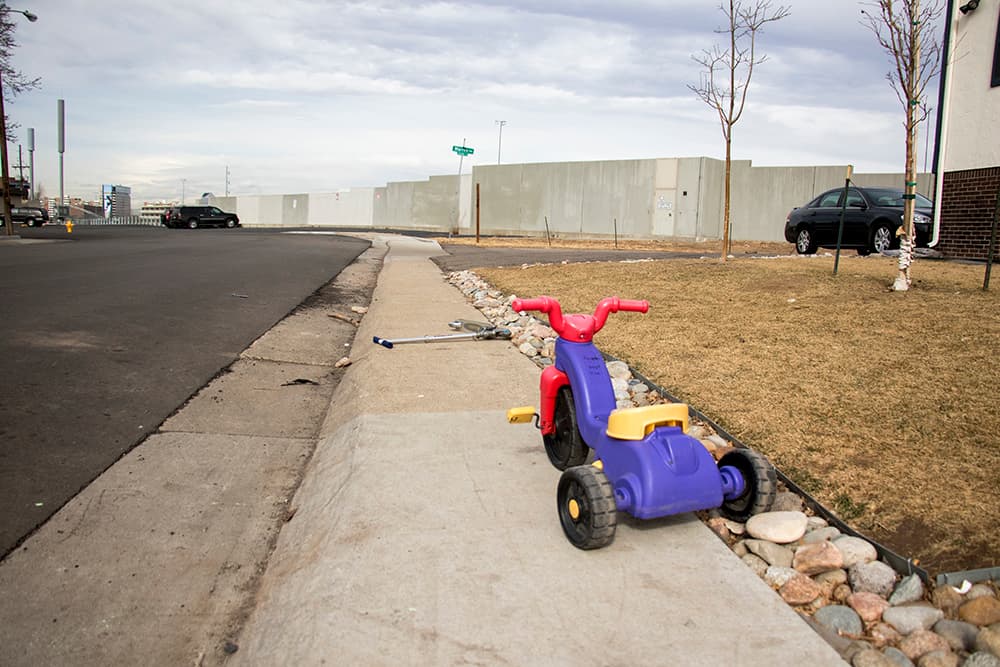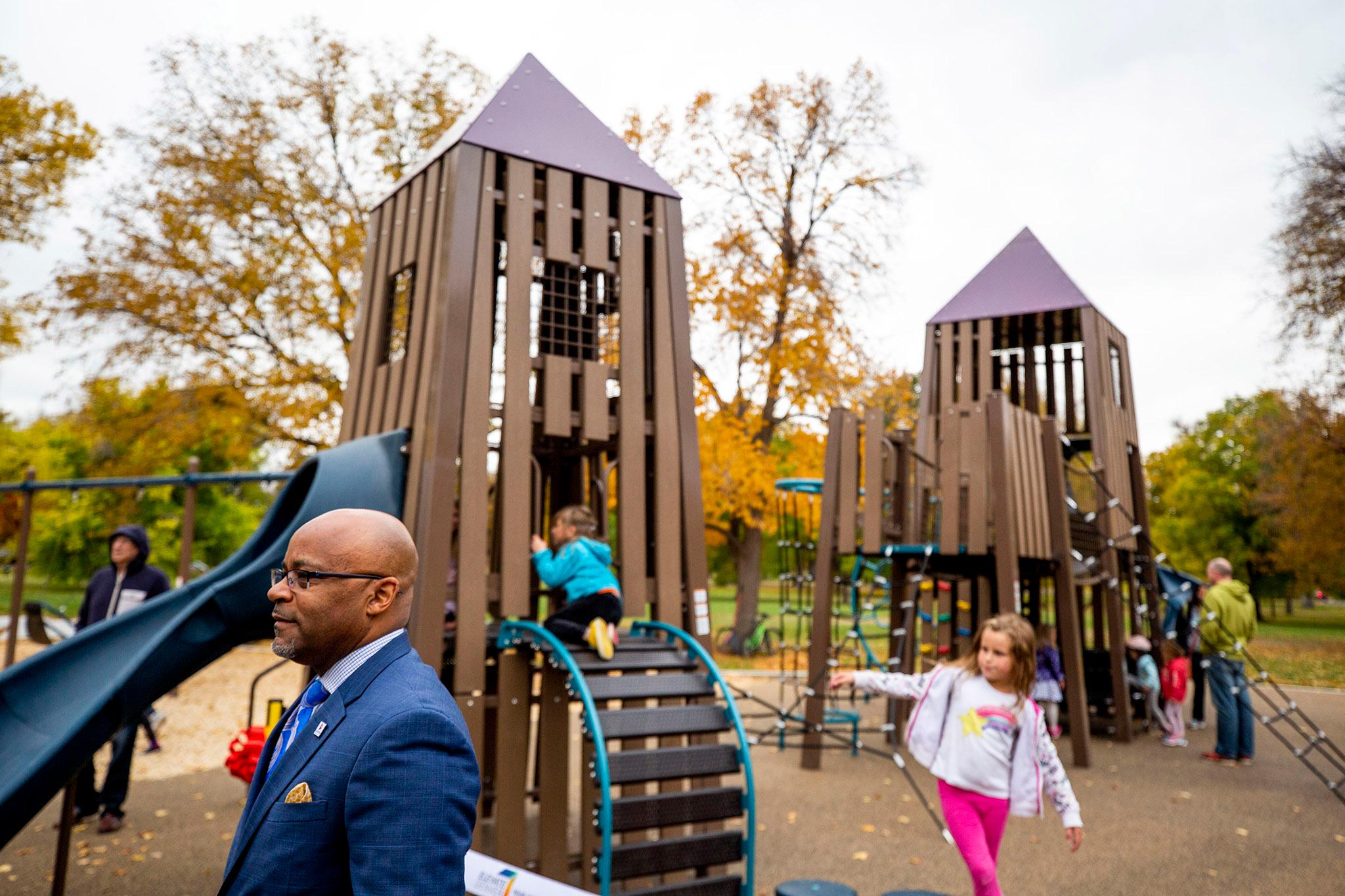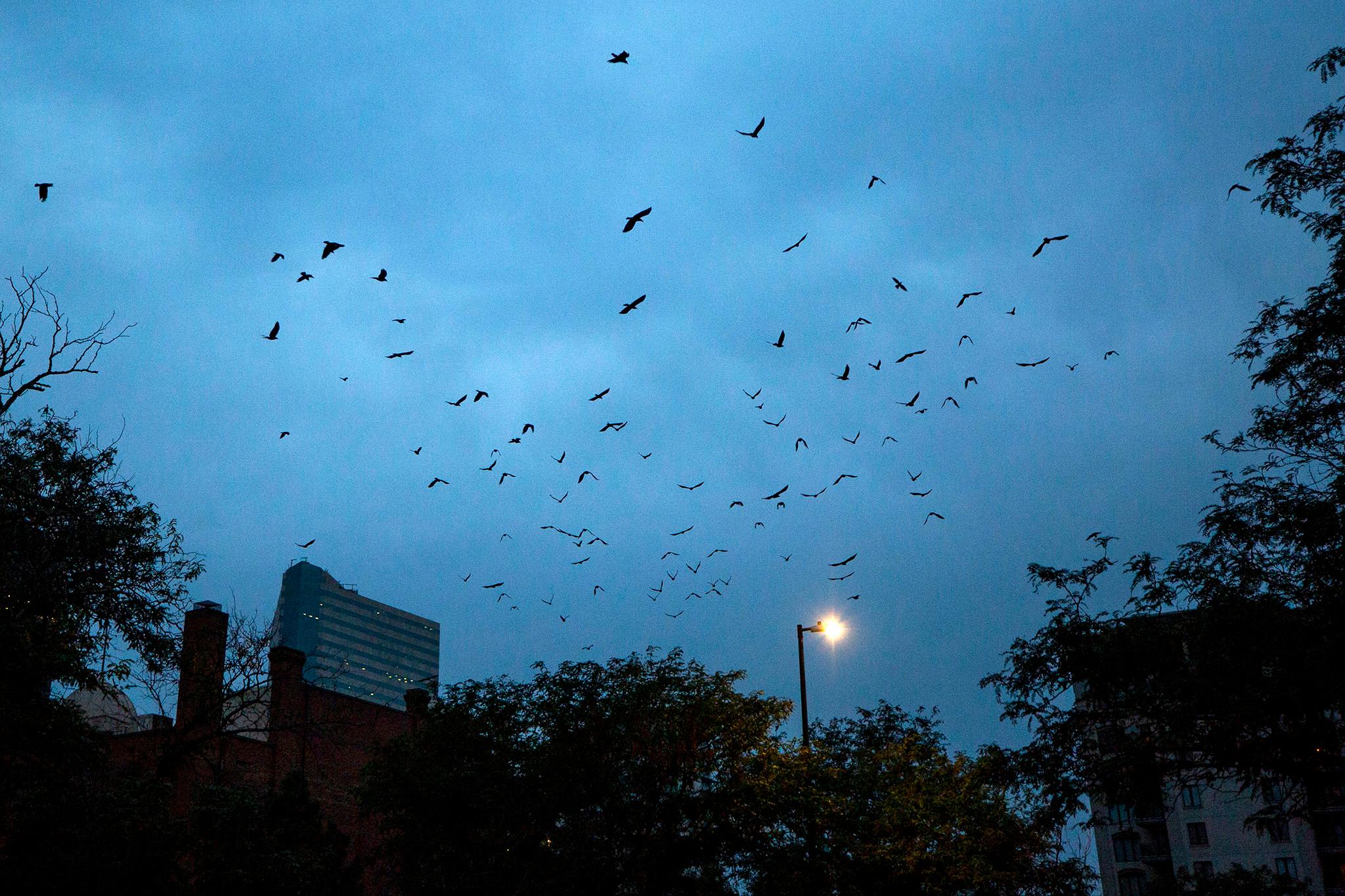In 2017, Denverites voted to let the city borrow $937 million to renovate libraries, fix sidewalks and make parks nicer. Mayor Michael Hancock agreed to set $1.7 million in a "participatory budgeting" fund, which residents will decide how to spend. (Participatory budgeting nerds just refer to the process as "PB.")
On Tuesday, from 6 to 7:30 p.m., the city will hold its first open house for people interested in helping guide the future of that pot of cash.
Kiki Turner, spokesperson for Denver's Department of Finance, said the plan is to assemble a community steering committee that will become the voice of residents in this process. A fund of $1 million is earmarked for projects in areas with completed neighborhood plans - basically, "Inverted L" areas, she said. The rest will go to mobility projects to make streets safer and easier to use for people who don't use cars.
Denver's long-term commitment to PB is still in an early and experimental stage, Turner said. Nobody's sure exactly how this will go, or who will even get to vote on spending once the process gets that far. How those finer details are handled, she said, will depend heavily on the steering committee. She also said Denver has already set aside another $1.7 million to run a second PB cycle.
While residents in Cole once spent $30,000 this way, and Overland neighbors spent $275,000 like this with money from Grandoozy, Turner said this is Denver's first city-wide PB project.
She admitted that $1.7 million isn't a whole lot of cash, especially when you consider Denver's 2022 budget comes in at about $1.49 billion. But even with all that spending power, she said officials still deal with more projects than they can afford and all kinds of trade-offs and negotiations. Anyone weighing in on the new PB process will feel that pain. The hope is this process helps people better appreciate how governments deal with money and also buy into long-haul participation in city affairs.
"Our hope is it will show people and bring people into the processes in more authentic ways and hopefully pave the way for more longtime civic involvement," Turner said over the phone. "Success for us means there will be easer ways to get involved with other forms of government processes."
We wanted to see how far this money would actually go, so we asked the city how much stuff costs.
Here are the ground rules for these numbers: (1) The following prices are approximations and don't include unseen problems like environmental remediation or right of way issues. (2) Each of these came from past project costs that Department of Transportation spokesperson Nancy Kuhn and Parks and Recreation spokesperson Cynthia Karvaski sent us, which means (3) none of these estimates include increases due to inflation or supply-chain problems.
Sidewalks
Kuhn said sidewalks can cost anywhere from $300,000 to $1 million per mile for just one side of street.
PB enthusiasts could reasonably expect to spend every bit of the $700,000 mobility budget on a half-mile of a given street. For context, approximately 17 blocks equals one mile in east-west short blocks in Capitol Hill or nine north-south long blocks. The $1.7 million could buy 14 miles of sidewalks on both sides of the street on the high-end.

Kevin J. Beaty/Denverite
Curb improvements
Kuhn told us "tactical curb extensions," which can allow for more accessible crossing, costs about $40,000 per intersection. $1.7 million would get you 42.5 better intersections at that rate.

Kevin J. Beaty/Denverite
Flashing crosswalk lights
These come in two varieties. First are the small-scale yellow signs that flash lights when someone presses a button. Second are "high-intensity activated crosswalk beacons," known as HAWKs, which sit on poles above streets, like regular stoplights.
The former cost $25,000 to $50,000 per intersection, which means the entire PB pot could buy about 34 of those smaller signals.
HAWKs are ten times as much, and run from $250,000 to $400,000 apiece. For those of you playing along at home, the $1.7 million could buy 4.25 HAWKs.
Bike lanes
The estimates Kuhn sent come in four different varieties:
1. A regular, unprotected bike lane can cost $50,000 per mile. The $1.7 million could buy about 17 miles of these lanes on both sides of the street; the $.7 million set aside for mobility could only buy 7 miles on both sides.
2. A "buffered bike lane" with space and bollards costs about $75,000 per mile on one side of the street. $1.7 million could buy about 11 miles of these on both sides of the street versus 4.6 miles with just the mobility budget.
3. A one-way protected bike lane costs about $300,000 per mile for one side, which means $1.7 million could buy 2.8 miles of these on both sides of the street. That $700,000 mobility budget isn't buying much more than a mile for both sides.
4. A two-way protected bike lane costs about $750,000 per mile, which costs more than the mobility budget can afford and would only buy 2.2 miles of two-way lanes with the entire pot. Kuhn stressed that the PB process is still in its very early stages and these prices will depend on location and all the restraints that come with it.

Kevin J. Beaty/Denverite
Playgrounds...
...can be very expensive. Karvaski said the new structures at City Park cost about $2,460,000, which came from the 2017 bonds, Parks and Rec's bank accounts and a nonprofit fundraiser that raised cash for the new inclusive swing and carousel there. The entire PB purse could finance about two thirds of that playground, though it is worth noting it is both large and cool.
Turner said it's possible city departments could supplement PB projects that cost more than residents will be given, but nothing is certain.
For some context, Karvaski said stand-alone swings cost about $10,000 per structure. The $1 million set aside for neighborhoods could fetch 100 of these, but she added that doesn't include drainage, ramps, excavation, etc. The full package might go for $45,000 -- or 22 standalone swings with all the fixings.

Picnic tables
By themselves, these humble structures only cost about $3,500 apiece, so Denverites could approve 285 tables with the $1 million neighborhood budget. That price rises to $100,000 at minimum if you want to include a shelter and concrete, so $1 million buys as many as 10 luxury picnic spots.

Kevin J. Beaty/Denverite
Lighting
Karvaski said a single light pole can cost $8,000 to $10,000, which means the $1 million neighborhood budget could buy about 100 of these items. But that's just the light itself, and doesn't include electrical equipment, Xcel hookups, any soil impacts or trees that might be in the way that will likely lower that count.

Housing
This one is orders of magnitude more complicated then the rest of the items on this list, but it's worth mentioning because a lot of people we spoke to about PB last year told us that's where money in this city needs to be going.
A new affordable housing project coming to Central Park will cost between $21 and $31 million per building, so the entire PB purse could purchase 8 percent of one of these at the low end. Interestingly, Denver kicked in a $1.67 million loan for one of these buildings, so it's conceivable a future community steering committee could try to give their pot of cash to a developer and encourage this kind of thing.
On the other hand, the Denver Housing Authority operates in the realm of hundreds of millions of dollars.











